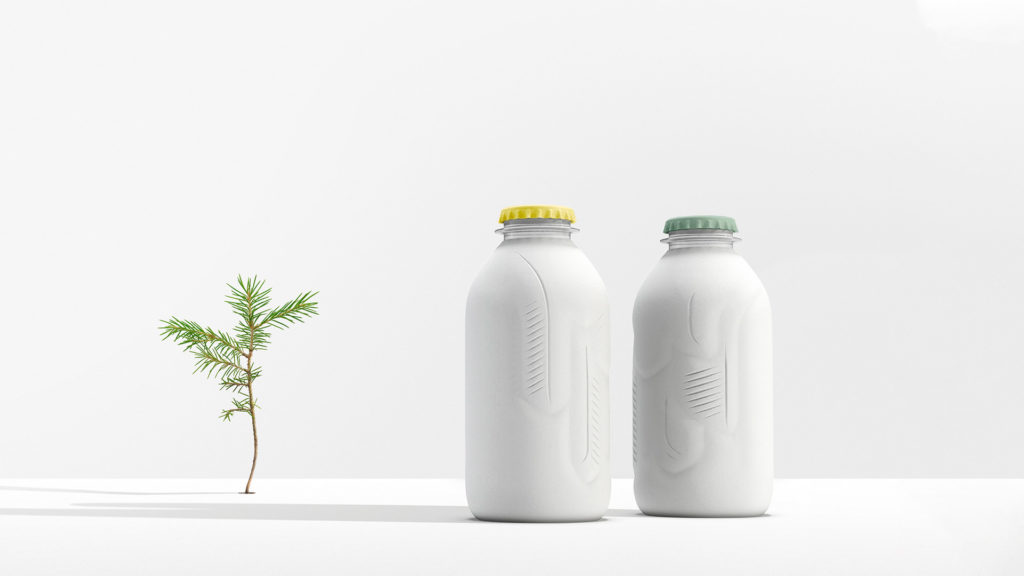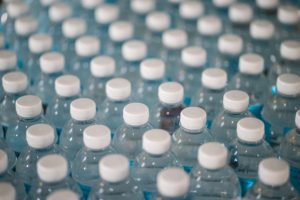
In 2018, Americans consumed more than 70 billion bottles of water, according to one study from the Container Recycling Institute, with three-quarters of those ending up in landfill or the incinerator, or when not properly disposed of, showing up in our waterways too.
Based on our consumption of bottled water in just one year alone, it’s evident we have a reliance on single-use plastic bottles. The good news is a new-found awareness of the impact of these containers is driving innovation and pushing alternatives for single-use materials.
But what material could possibly be suitable for the storage, transportation, and eventual consumption of all that liquid? The surprising answer may lay with paper. Here we look at how paper bottles are being explored as an alternative to single-use plastic bottles.
What’s in a paper bottle?
Today, there are companies designing and developing paper-based bottles, with high-profile drink manufacturers beginning to show an interest. However, storing, preserving, and transporting liquids inside a porous material presents some challenges.
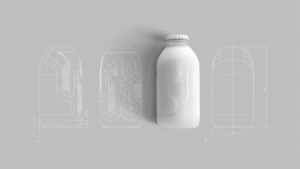
Source: paboco.com
In the case of soda, bottles must be able to withstand the forces exerted by carbonated drinks which are bottled using pressurized machines. However, as with any container for liquids, they also need to retain that “bottle” shape for transport and, of course, easy pouring. Finally, they need to preserve the liquids for prolonged periods of time, without the threat of leaking, splitting, or contamination.
With these requirements in mind, paper bottle manufacturers have been forced to compromise, developing hard, molded paper shells with plastic linings that keep the liquids inside from leaking or otherwise damaging the bottle. Additionally, screw tops and caps required for sealing the bottles are generally made of plastic, and it’s these designs that are beginning to be tested on the consumer market.
Among the most high-profile companies developing paper bottle packaging is PABOCO (The Paper Bottle Company), and recent news announcing Coca-Cola’s first trials of PABOCO’s designs in Hungary is seen as a step in the right direction—regardless of the potential compromises of the design itself.
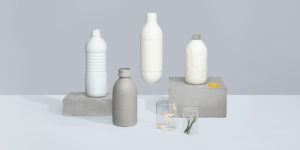
Source: paboco.com
A paper bottle from Carlsberg, announced in 2015, was touted as the first of its kind, with design support from ecoXpac and post-doctoral researchers from the Danish Technical University (DTU). As the process developed, the Absolut Company and L’Oréal also committed to developing sustainable paper bottle packaging, with PABOCO bringing together all of these companies through the Paper Bottle Community to drive further innovation.
The recycling challenges of multi-material paper bottles
The natural biodegradability of paper and card used in lieu of plastics–which can take thousands of years to break down while also generating microplastics–is a positive departure from our existing reliance on single-use soda and water bottles.
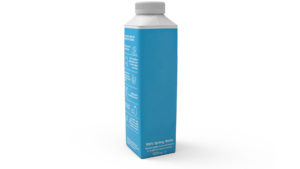
Source: https://www.tetrapak.com
The problem lies in paper bottles that rely on plastic liners to ensure the contents remain fit for consumption, such as for carbonated beverages. This is a real issue for the recycling industry, as multi-material packaging can be notoriously difficult to recycle—if not impossible. When recyclables are collected, they are brought to a Materials Recovery Facility (MRF) which separates materials most often by mechanical recycling. This means aluminum, paper, glass, cardboard, etc., are separated by sorting technology into different piles and then baled to be sold. Cartons would be separated into their own category because they are made up of several materials, and if the MRF is able to successfully secure a buyer for the bales of cartons, that buyer would need to separate the carton materials further to obtain the material that is desirable within that carton. For example, a pulper might buy the cartons to extract the paper to use for new materials while the other materials may be destined for landfill. If the recycler is unable to secure a buyer for the bales of cartons, that facility would have to pay to send it to landfill or incineration, which means they would lose money by taking in that material.
Additionally, with concerns surrounding multi-material products, some wonder if they offer little benefit when compared to our existing reliance on PET – or the type of plastic used for most single-use beverage bottling.
Unfortunately, recycling rates across the US remain shockingly low, with as little as 30% of PET bottles being recycled, and with the inherent risk of contamination that can render recycled materials impure and of less value than virgin materials. This results in it being cheaper to use virgin materials to manufacture plastics than it is to use recycled plastics and adds the issue of more plastic in the environment.
Circularity through biodegradability
The good news, at least for beverages that are not carbonated (such as water and spirits), is that fully biodegradable packaging is already achievable. Diageo, in partnership with Pulpex Limited, has announced it will begin rolling out its 100% plastic-free paper bottles in 2021, kicking off with premium products such as Johnnie Walker whiskey.
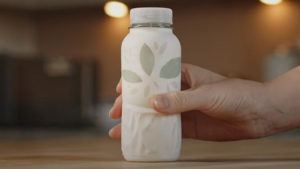
Source: bbc.com
Made from sustainably sourced wood and lined with a non-plastic coating to protect the contents, the bottle is being hailed as the first fully biodegradable, fully recyclable paper bottle that meets food compliance standards. Crucially, it also doesn’t rely on plastic caps or screw tops.
Both Unilever and PepsiCo are also expected to release their own branded versions of the Pulpex paper bottle designs, meaning that truly circular paper bottles may hit the shelves in the near future.
Innovation for sustainable alternatives to plastic bottles is promising but needs to carefully consider the lifecycle of the container and its impact on the environment. Recycling systems are currently not equipped to decompose multi-material bottles, which may cause more harm than good in the long run. Educating manufacturers and legislators on material management requirements is a critical next step to ensure mass production of single-use bottles can be properly disposed of and reused.
For more information on how your business can reduce, reuse, and recycle while implementing more efficient waste management systems, contact one of our TRUE advisors today. Additionally, subscribe to the RTS blog for the latest information on all subjects relating to sustainability and the circular economy

